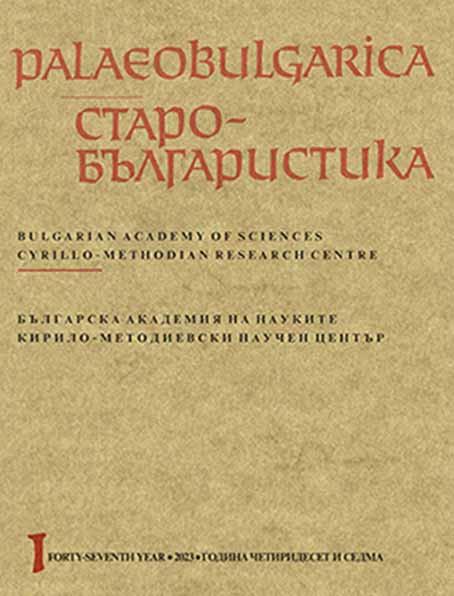Bemerkungen über mittelbulgarische Inschriften in griechischen Handschriften: Die Inschrift von Dobryna im Codex Vat.gr. 353 (Lektionar der Evangelien)
Remarks on Middle Bulgarian Inscriptions in Greek Manuscripts: Dobryna’s Inscription in Codex Vat. Gr. 353 (Gospel Lectionary)
Author(s): Alessandro Maria BruniSubject(s): Language studies, Language and Literature Studies
Published by: Кирило-Методиевски научен център при Българска академия на науките
Keywords: Old Church Slavonic; Middle Bulgarian Language; Inscriptions; Byzantine Manuscripts; Paleography; Bulgarian Medieval Documents; Language contact; Historical linguistics; Lexicography.
Summary/Abstract: The present paper offers a fresh insight into the decipherment, the meaning, and the linguistic features of a Middle Bulgarian inscription, which has todate mostly eluded the attention of scholars. It is to be found on folio 37v of the Greek Manuscript Vat. gr. 353, a Lectionary of the Gospels in liturgical majuscule script that can be dated on paleographic grounds to the mid 10th century. The author rejects Dujčev’s 1966 interpretation by offering a completely different reading of some crucial parts of the text and a new commented edition. Far from being a contract between a widow in financial difficulties and an anonymous priest, to whom she would have allegedly given her son in exchange for a field as well as for material goods (fabrics and food), the inscription would instead be a transfer deed (barter agreement) between a father, Dobryna, and his son, the priest Aspion. The study furthermore offers a series of grammatical and lexical remarks on the text, focusing in particular on the use of loanwords from Greek, that are shown to be the consequence of language contact between Byzantine Greek and Middle Bulgarian in the Balkans. The linguistic and paleographic features of the inscription, as well as its comparison with a number of Middle Bulgarian documents (“gramoti”), enable us to date it to a period no later than the first half of the 13th century and to consider it to be of West Bulgarian origin.
Journal: PALAEOBULGARICA / СТАРОБЪЛГАРИСТИКА
- Issue Year: 2023
- Issue No: 1
- Page Range: 29-40
- Page Count: 12
- Language: German
- Content File-PDF

